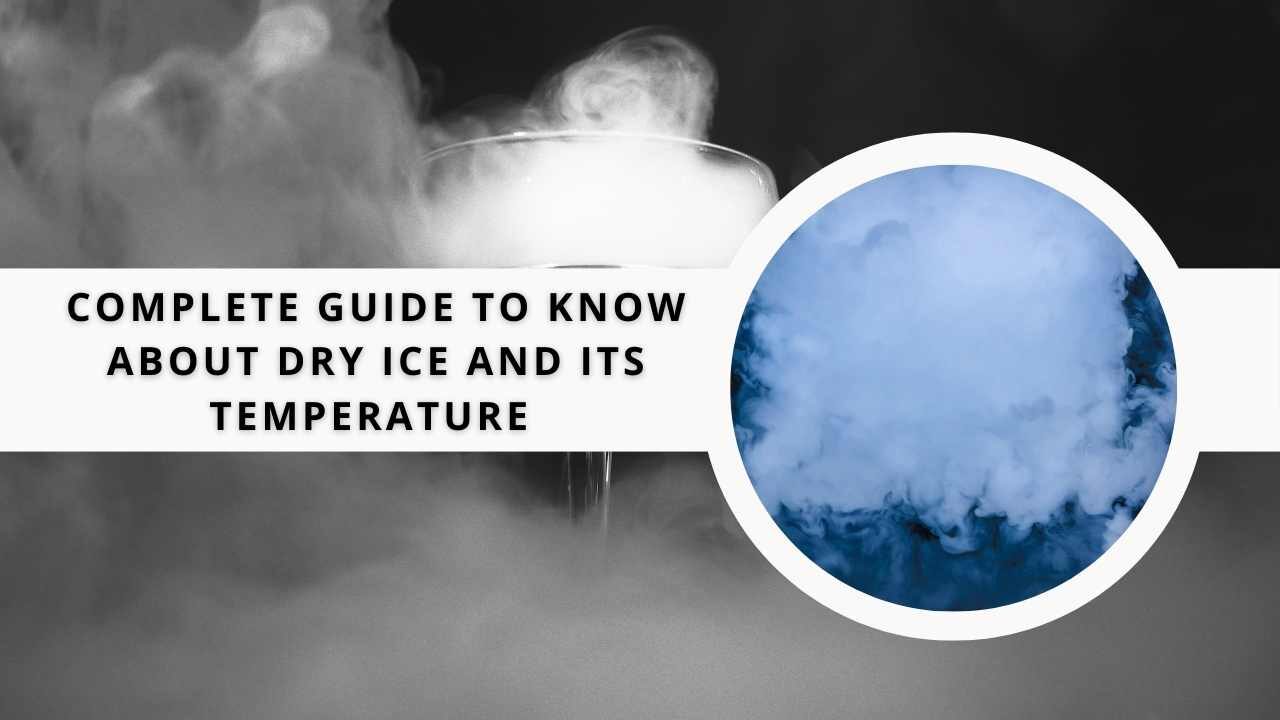Dry ice is often used to ship vaccines, and it’s one of the most popular modes for doing so. It has a temperature close enough that can easily maintain vaccine integrity during transport without harming them in any way!
To protect the life of our customers’ shipments, it’s more important than ever to be able quickly to respond when temperatures vary outside their tolerance levels. Data loggers that can withstand extreme conditions are required for this task!
What Is Dry Ice?
Dry ice is carbon dioxide in its solid state. It is made by liquefying and pressurizing CO2, then allowing it to expand and cool into small pellets or blocks. The dry ice temperature is around -109°F (-78°C).
What Is Dry Ice Temp and How It Is Calculate?
The dry ice temperature is the temperature at which the solid form of carbon dioxide (CO2) turns directly into a gas. This process is called sublimation.
The temperature of dry ice is calculated by taking the normal freezing point of CO2 (-109°F or -78°C) and adding the heat of sublimation (143 kJ/kg). This results in a dry ice temp of -109°F/-78°C.
Dry Ice Formula in Mathematics
The dry ice formula is used to calculate the temperature at which CO2 will sublime. This can be useful in many applications, such as keeping things cold or creating special effects.
The formula is: T = -109°F/-78°C + 143 kJ/kg
Dry Ice Uses- How Dry Ice Works
Dry ice is most commonly used for two purposes: to keep things cold and to create special effects.
Keeping things cold: Dry ice can be used to keep things cold because of its high sublimation temperature. This means that it will stay in a solid state longer than other forms of ice, such as wet ice or dry ice.
Creating special effects: Dry ice can be used to create special effects because of its low temperature. When dry ice is placed in water, it creates a fog-like effect. This can be used for special effects in movies or theatre.
How to Make Dry Ice At Home
You can make dry ice at home using a few simple ingredients and a little bit of know-how. The most important thing you’ll need is a source of CO2. This can be obtained from a CO2 tank or cylinder (often used for paintball guns or kegs).
- Once you have your CO2, you’ll need a way to make it cold. This can be done by using a cooler or freezer. Simply place your CO2 tank or cylinder in the cooler or freezer and allow it to cool for several hours.
- Once your CO2 is cool, you can start the process of making dry ice. First, you’ll need to find a container that’s big enough to hold all of your CO2. This could be a bucket, trash can, or even a bathtub.
- Next, you’ll need to place your CO2 tank or cylinder in the container and open the valve. Doing this will cause the CO2 to start expanding and filling the container.
- Once the container is full of CO2, you’ll need to seal it off so that no more gas can escape. You can do this by placing a lid on the container or by wrapping it tightly with plastic wrap.
- Finally, you’ll need to wait for the CO2 to turn into dry ice. This usually takes about 24 hours. Once the process is complete, you can remove the dry ice and use it however you’d like.
Making dry ice at home is a relatively simple process that can be used for a variety of purposes. Whether you’re looking to create special effects or keep things cold, dry ice can be a great option.
Dry Ice Tips and Tricks – How to Store Dry Ice
If you’re planning on storing dry ice, there are a few things you’ll need to keep in mind. First, you’ll need to find a container that’s big enough to hold all of the dry ice you have. This could be a cooler, freezer, or even a bathtub.
- When dry ice is placed in water, it will sink and the water will start to boil. This is because the dry ice is so cold that it can lower the water’s boiling point.
- Dry ice is often used to keep things cold because it is very efficient at absorbing heat. It is also non-toxic and leaves
- Once you have your container, you’ll need to make sure it’s not airtight. This will cause the pressure to build up and the container to explode.
- Finally, you’ll need to keep the dry ice away from children and pets. Dry ice can be very dangerous if it’s not handled properly.
With these tips in mind, you’ll be able to store dry ice safely and effectively.
Final Thoughts
Dry ice is a great way to keep things cold during shipping. However, it is important to be aware of the dangers that come with using it. Make sure that you are using a strong container that can handle the pressure that will build up when the dry ice sublimes. Additionally, be careful when handling dry ice as it can cause serious burns if it comes into contact with your skin. When using dry ice, always use caution to avoid any potential accidents.
Frequently Asked Questions
Q: Difference Between Dry Ice and Liquid Nitrogen?
A: The main difference between dry ice and liquid nitrogen is that dry ice sublimates whereas liquid nitrogen evaporates. Dry ice is solid CO2 whereas liquid nitrogen is a liquid form of N2. Both are used to achieve extremely cold temperatures.
Q: Can I use Liquid Nitrogen Instead of Dry Ice?
A: While you can use liquid nitrogen instead of dry ice, it is not as effective. Liquid nitrogen will evaporate quickly and does not achieve the same low temperatures as dry ice.
Q: What is the melting point of dry ice?
A: The melting point of dry ice is -78.5 degrees Celsius.
Q: What is Cryogenic Shipping
A: Cryogenic shipping is a great way to ship items that require extreme temperatures. Liquid nitrogen rather than dry ice and an efficient method for biological materials, hospitals, or tissue banks; cryonics also has benefits in fertilization clinics!






